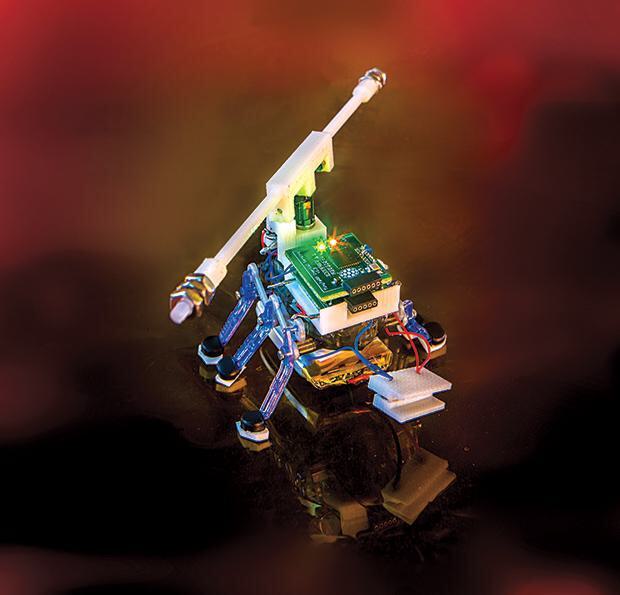- October 06, 2014
- More articles By David Kohn
To Sarah Bergbreiter, watching insects crawl, jump and scurry is amazing. Some fleas can hop 100 times their height, the equivalent of a human leaping a 60-story building. Adjusted for size, ants can move much faster than Usain Bolt and easily outpace humans on rough terrain. When was the last time you climbed straight up a wall or made yourself into a human bridge to ensure the continued existence of your community?
The associate professor of mechanical engineering isn’t wasting time watching bugs. She’s getting inspiration for her microrobots, which could one day be used in medicine, consumer electronics and surveillance.
“You have this incredible proof that these designs work,” she says. “They already exist in nature.”
Since coming to Maryland six years ago, she has created more than a dozen kinds of microrobots, ranging in length from 4 millimeters to a whopping 6 centimeters. The eight graduate students in her lab painstakingly craft some by hand while others are machine-made.
Since she was a kid, she’s been into robots—“the idea of instructing something to move was always really fascinating to me,” she says. She studied electrical engineering at Princeton, and as a grad student at the University of California, Berkeley gravitated to designing mini-robots.
Practical uses for her inventions remain years away, but she envisions dumping a bucket of camera-equipped mobile devices into a collapsed building, where they would work their way into otherwise unreachable crevices and alert rescuers about people who are trapped. Or they could scramble up the stanchions of a bridge, checking for structural defects.
She sees myriad possibilities: “Imagine what you could do if you had thousands of mini-robots at your beck and call.”
Issue
Fall 2014Types
Innovation